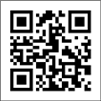資料紹介
Object;
Part A - Determine the changing color of the indicator(nethyl orange) in the
reaction(HCL + NaOH) and with water..
Part B - Determine the reaction to form Iron Thiocyanate.
Discussion;
Part A – Q.1 addition of acid --- NaOH + HCL ⇔ NaCl + H2O (orange color)
Part A – Q.2 addition of acid --- NaCl + H2O ⇔ NaOH + HCL (reddish color)
Part A – Q.2 Changing color
Part A – Q.3 addition of acid --- reaction shift right
Part A – Q.2 addition of base --- reaction shift left
Part A – Q.4 When we added base to acid, color became light orange. And when we added acid to
Part A – Q.4 base, color turned reddish color.
Part B – Q.1 FeCl3 + KSCN ⇔ FeSCN + KCl3 (darkred)
Part A – Q.2 There were no changes.
Part A – Q.3 There were no changes.
Part A – Q.4 Became clear. (orange, darkred precipitate)
Part A – Q.5 FeCl3 + NaOH → Fe(OH) 3 + NaCl3
Part A – Q.6 Became clear. (whitish precipitate) AGSCN
Part A – Q.7 FeSCN + AgNO3 → AgSCN + FeNO3
Part A – Q.8 If a system at equilibrium, and if we change concentration, pressure or temperature,
Part A Q.8 reaction shift to the direction which we changed concentration, pressure or
Part A Q.8 temperature.
 All rights reserved.
All rights reserved.
資料の原本内容 ( この資料を購入すると、テキストデータがみえます。 )
*Equilibrium Lab.
/Object;
Part A - Determine the changing color of the indicator(nethyl orange) in the
reaction(HCL + NaOH) and with water..
Part B - Determine the reaction to form Iron Thiocyanate.
/Procedure;
See attachment (handout).
/Materials;
Plate, water, 0.1mol HCL, 0.1mol NaOH, methyl orange, 0.1M FeCl3,,, 0.1M KSCN, 0.1M AgNO3,
/Observations;
> Part A. (Data table)
+ Methyl Orange (Color; orange) Water Became clear (light orange) +0.1M (1 drop) HCL Rose Pink (clear solution) +0....








